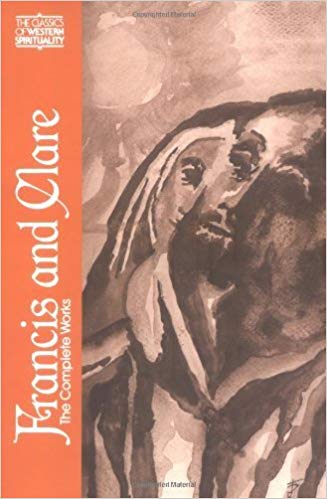
The book Francis of Assisi and His World is a relatively small book packed with full color pictures of relics, paintings, maps, and buildings from the time of Francis of Assisi. While this format is uncommon among theology/history books, it makes sense considering it was written by the Managing Editor of Christianity Today magazine, Mark Galli. Though different, the format does fit with Galli’s goal of helping the reader “understand the modern medieval Francis” by giving them a “glimpse of life in the Middle Ages.”[1]
The textual style of the book built upon the graphical format of the book and helped tell the story of Francis. Though Galli consulted a “great deal of scholarship”[2] in researching the book, he chose to keep the text concise with a moving narrative. This choice worked incredibly well as I found myself fully engaged with the material while pictures of Assisi and Francis swirled around my head.
Content wise, Galli divided the story of Francis into thirteen parts that follow the general time progression of the saint’s life. The first nine chapters dealt mostly with the more historical events of the saint – i.e. his time as a knight, when he disowned his father, the founding of the Franciscan order, etc. Chapters ten through twelve focused more on Francis teachings and life reflections though they still followed the basic timeline of his life, especially the time after he stepped down from leadership and was preparing to die. Galli uses the last chapter not only to give the reader a sense of what happened to the Franciscan order after Francis death, but also to summarize his conclusion on how the modern reader should respond to Francis’ message.[3]
It is this later theme that was of interest to me for Galli goes to great pains to remind the reader that Francis was focused on calling people towards “simplicity and poverty.”[4] This was the great message of Francis of Assisi along with the call to forsake one’s sinful actions and embrace the way of Jesus of Nazareth.[5] Sadly this message has been divorced from the memory of Francis with his likeness being used to promote environmental stewardship or service to the poor with no mention of Jesus.[6] This, quite frankly, was the Francis I knew prior to reading Galli’s book.
In reading this book, however, I
have come to a new understanding of who Francis of Assisi was. His call towards
simplicity is one that I have found myself embracing over the years in an
effort to combat the hyper-materialism of modern American culture. I also
enjoyed learning about Francis’ message of humility. His choice to submit to
church leadership even though he knew they were incorrect in some things is
truly remarkable. All too often, we humans allow pride to divide us rather than
seeking to retain relationship with each other through humility and grace.
Though Francis’ personal example of humility is one that seems out of reach for
myself, I have to admit that it is encouraging and enlightening. To that end, I
have a new respect for Francis of Assisi and the Franciscan order he founded.
[1] Mark Galli, Francis of Assisi and His World (Downers Grove, Illinois: InterVarsity Press, 2002), 7-8.
[2] Mark Galli, Francis of Assisi and His World, 8.
[3] Mark Galli, Francis of Assisi and His World, 8, 182-183.
[4] Mark Galli, Francis of Assisi and His World, 183.
[5] Mark Galli, Francis of Assisi and His World, 56-57, 138, 179, 183.
[6] Mark Galli, Francis of Assisi and His World, 181.


 Written in the style of wisdom literature with a “delicate balance of fiction and nonfiction,”
Written in the style of wisdom literature with a “delicate balance of fiction and nonfiction,”